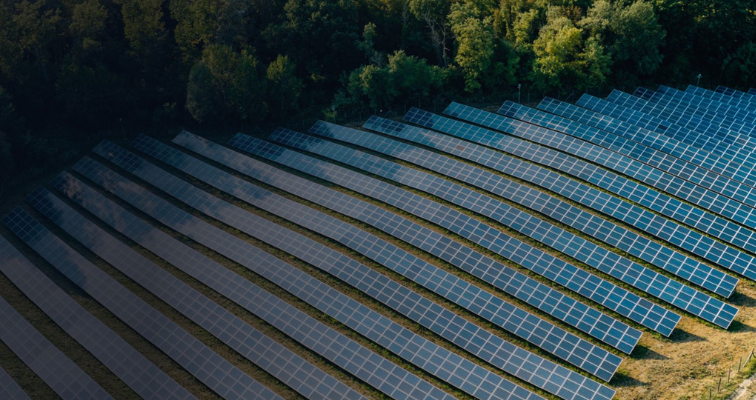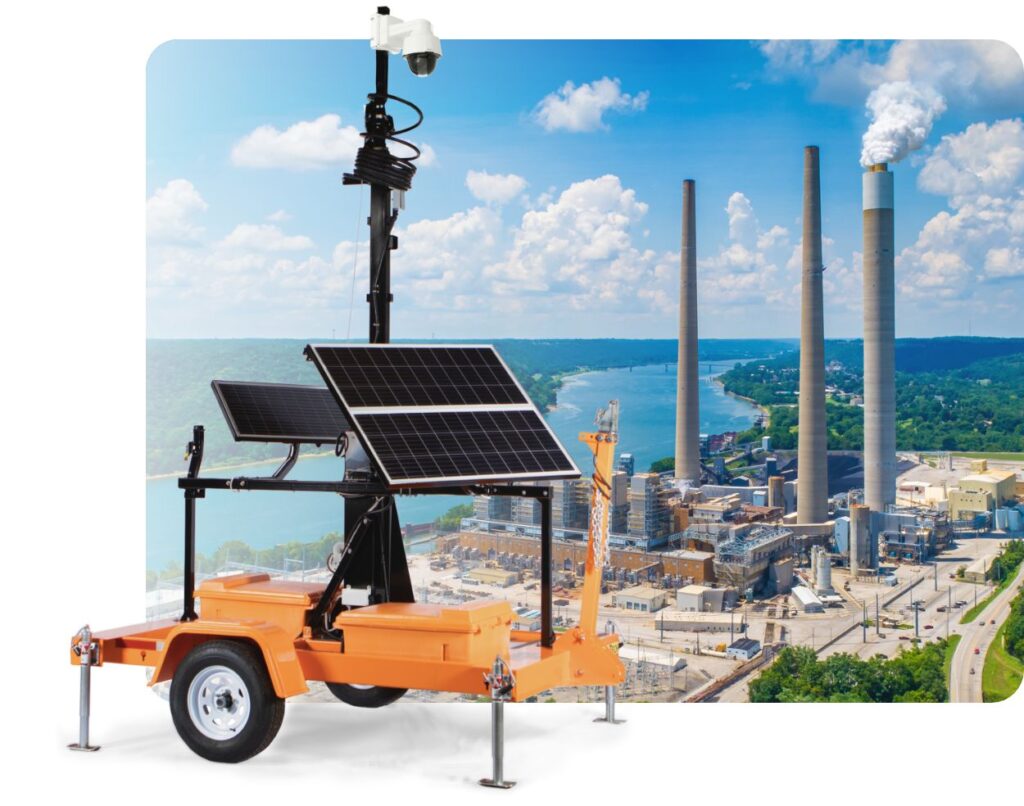We all benefit from critical infrastructure, which includes the systems and assets we rely on daily. Simply put, critical infrastructure includes the transportation, utilities, and communication networks we enjoy.

These modern-day necessities are the backbone of societal and economic stability, supporting everything from the energy that powers our phones and the water we drink to public safety and emergency services, along with the vast network that connects everything together.
Unfortunately, threats like cyber attacks, natural disasters, physical security breaches, and violent attacks put these vital sectors at significant risk. Protecting them is more than avoiding disruptions; it’s about ensuring national security, economic stability, and public safety.
Defining Critical Infrastructure
Modern life depends on critical infrastructure sites that provide essential services, but what exactly are these sites, and who is responsible for securing them?
Critical infrastructure ownership varies, with some sites managed by government entities, such as the Department of Homeland Security, while others fall under private industry, like energy and utility companies. The key sites requiring strong security measures include:
- Solar Farms & Power Plants: These facilities generate electricity that powers homes, businesses, and industries, making them prime targets for vandalism, theft, and cyber threats.
- Electrical Substations & Grid Infrastructure: Substations and transmission lines are essential for energy distribution, and disruptions can lead to widespread power outages.
- Dams & Water Treatment Facilities: These sites ensure clean water access and flood control but are vulnerable to both physical and cyber threats.
- Hazardous Waste Management Facilities: Proper handling and storage of hazardous materials are critical to public and environmental safety, requiring strict security protocols.
- Energy Production Sites: Whether oil, gas, or renewable energy, these production facilities are vital to economic stability and require protection from sabotage and unauthorized access.



Securing these critical sites is essential to preventing service disruptions, environmental hazards, and safety risks. Investing in advanced security measures ensures these key infrastructures remain operational and protected.
Understanding the Threats to Critical Infrastructure
Threats to our critical infrastructure come from all directions. We must be ready for whatever comes our way, including:
- Physical Threats: Vandalism, theft, terrorism, and environmental hazards like storms or floods pose significant risks to our infrastructure. To keep these areas secure from physical threats, managers and stakeholders deploy barriers, security guards, and remote deterrent systems, ready at a moment’s notice to prevent incidents.
- Cybersecurity Risks: Our increased reliance on technology within infrastructure introduces heightened vulnerability to cyber attacks. That increased risk means deploying cybersecurity measures, such as firewalls, multi-factor authentication, tight access control, cyber threat detection, and antivirus/antimalware software.
- Operational Disruptions: Recent global conflict reveals how fragile supply chains are. To make matters worse, construction companies are dealing with workforce shortages, and many work with outdated equipment—a sign of tougher economic times.
Unfortunately, these threats aren’t going anywhere. But we can arm ourselves with knowledge, technology, and strategy to prevent our critical infrastructure systems from falling victim to incidents.
Key Strategies to Protect Critical Infrastructure
As we highlighted in the previous section, the critical infrastructure sector is a prime target for criminals. They also have an elevated inherent risk because of their necessity for society’s continued comfort.
To help protect the critical infrastructure under your authority, implement these strategies:
- Conduct Risk Assessments: Vulnerabilities always expose themselves at the worst times, but you can be ready by conducting regular risk evaluations. Prioritize high-risk areas and design risk mitigation strategies that suit your needs.
- Establish Access Control Protocols: Use physical barriers, fencing, gates, and secure entry systems like biometrics or keycards to limit unauthorized access. These access control systems provide trending data, which tells you if access doesn’t line up with schedules.
- Leverage Technology Solutions: Technological advances, such as construction cameras, provide 24/7 live views and documentation functionality. Companies like TrueLook also deploy solutions like TrueShield, which have audiovisual deterrents, including strobes, sirens, and talk-down features. These tools even contact police if incidents escalate.
- Implement Redundancy and Backup Systems: Backup systems, whether through generators, security tech, or third-party partnerships, are integral in maintaining operations and preventing downtime. Those systems should extend to your equipment and tools to further prevent delays.
- Develop a Comprehensive Security Plan: A robust security plan outlines who is responsible for each aspect of security and outlines a process for how to handle incidents as they occur.
No strategy will prevent 100% of incidents, but a robust, multi-layered approach mitigates more risk than single solutions on their own. You will also need to continuously update your approach to meet the specific security needs of each construction site.
Enhancing Protection with Advanced Technologies
Technology offers a way for stakeholders to monitor and maintain protection at their properties when physical presence isn’t practical. These emerging tools, devices, and systems are currently available or will be available within a few short years:
Surveillance Cameras and Sensors
Use thermal, infrared, and motion-detection cameras to monitor and secure perimeters. Cameras and sensors outside the visible spectrum allow you to capture incidents in poor weather and at night. Providers like TrueLook also have remote/mobile camera trailers to support surveillance of off-grid sites.

For construction sites in isolated locations or areas where unauthorized access is a major concern, jobsite monitoring services add an extra layer of security. TrueLook’s live monitoring centers actively watch sites, providing real-time alerts if any threats or suspicious activity are detected—especially in places where no one should be. This proactive approach helps prevent theft, vandalism, and safety risks before they escalate.
Drones for Surveillance
Drones give you a birds-eye view of large and remote jobsites, reaching heights well above traditional shots. Drone missions also record construction progress, which is perfect for marketing and updating stakeholders.
IoT Devices and Smart Sensors
Internet of Things (IoT) technology connects inanimate equipment to virtual webs, providing insight into structural integrity, environmental conditions, and anomaly detection. IoT devices, along with smart sensors, protect equipment and tools from theft by offering GPS tracking and theft reporting features.
Building a Proactive Security Culture
A proactive security culture in private sector contractors translates to protection for the nation’s critical infrastructure, which is essential for national and economic security. Start with a robust training program to equip all personnel with security protocols, emergency procedures, and cyber threat knowledge.
Technology plays a critical role in site security, as humans can’t be everywhere at once. Surveillance systems, motion-detection cameras, and remote monitoring solutions provide continuous oversight, ensuring no threats go unnoticed. It’s essential that teams not only understand security protocols but are also familiar with the technology in place, knowing how to operate or respond to alerts from monitoring systems when necessary.
To keep your team sharp, run regular drills and simulations to help engrain and refine strategies. This proactive approach ensures your team’s preparedness during real-world events, like natural disasters or security incidents.
For particularly challenging projects, collaborate with government agencies, private sector stakeholders, and cybersecurity firms to develop a comprehensive approach to infrastructure protection. Security professionals are experts on the specifics of developing comprehensive plans.
Safeguard the Foundations of Our Society
Critical infrastructure security is a team effort that requires constant attention, smart planning, and the right collection of tools. A mix of technology, proactive strategies, and ongoing training reduces risks and keeps essential systems running smoothly.
Ready to start securing critical infrastructure? Establish foundational protection with security systems and construction cameras with TrueLook.
Protect What Powers the World
Security isn’t optional when it comes to critical infrastructure. Monitor, deter, and safeguard your sites with TrueLook’s advanced security solutions.

